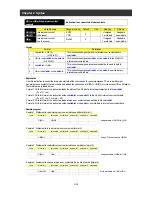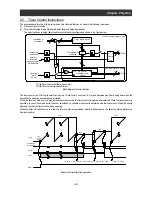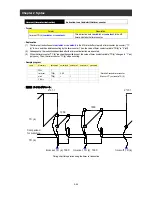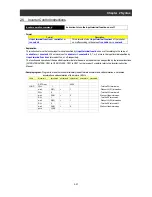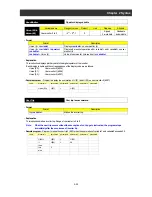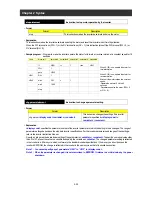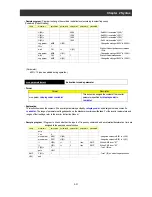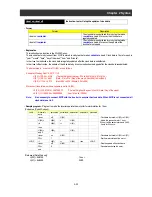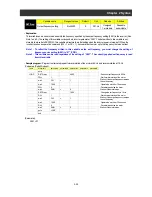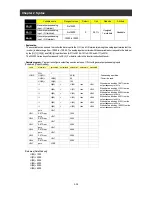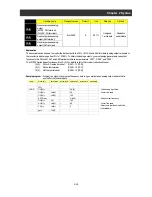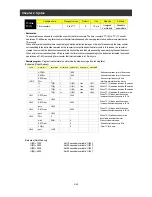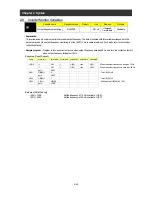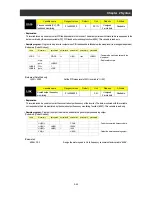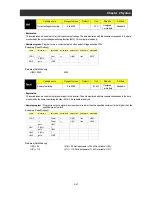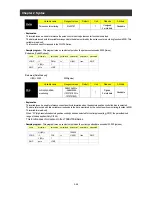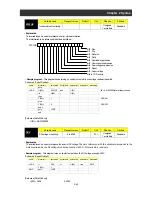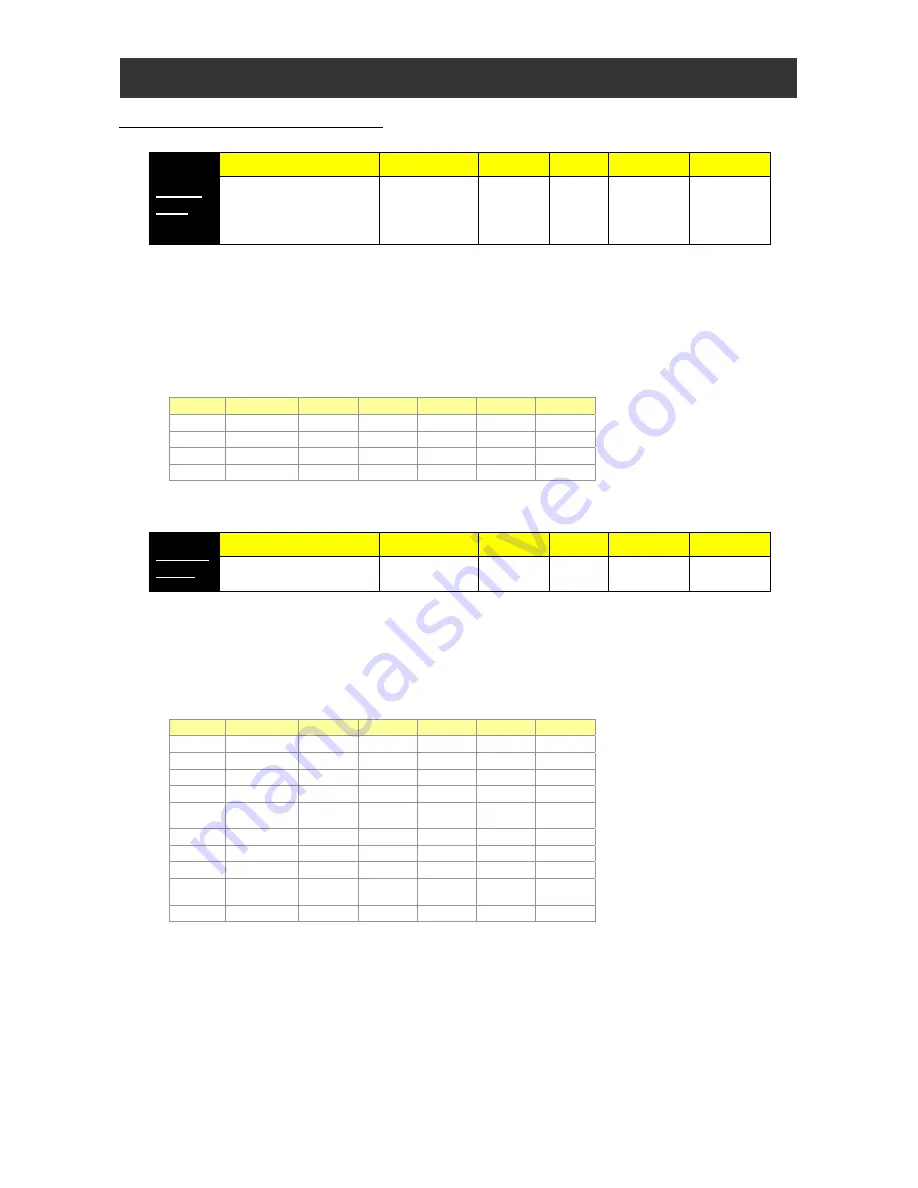
Chapter 2 Syntax
2-34
2.7
Other Reserved Variables
U (00) to
U (31)
Variable name
Range of values
Default
Unit
Data size
Attribute
User-defined variable
0 to 65535
Data
stored in
P100 to
P131
-
Unsigned
1-word data
Readable
and writable
- Explanation
User-designed variables are the general-purpose functions that can be used as unsigned 1-word variables regardless of
format. The data written from a sequence program to the user-defined variables is not stored in the inverter's EEPROM. The
variables will restore the initial settings when the inverter power is turned off. The user-defined variables correspond to inverter
parameters “P100” to “P131”. You can also change the settings of user-defined variables from the digital operator. The changes
made from the digital operator will be stored in EEPROM.
- Sample program
Label
Mnemonic
parameter1
parameter2
parameter3
parameter4
parameter5
㩷
㩷 䋺
㩷
㩷
㩷
㩷
㩷
㩷
U(00)= U(00)
+
U(01)
㩷
㩷
㩷
U(02)= U(00)
*
U(02)
㩷
㩷
㩷
U(03)= U(00)
mod U(01)
㩷
㩷
UL (00) to
UL (07)
Variable name
Range of values
Default
Unit
Data size
Attribute
Internal user variable
-2
31
to 2
31
-1
0
-
Signed
2-word data
Readable
and writable
- Explanation
Internal user variables are the general-purpose functions that can be used as unsigned 2-word variables, for example, to
temporarily store arithmetic operation results.
Note :
If an arithmetic operation causes data overflow, an execution error (E45) will result.
- Sample program
Label
Mnemonic
parameter1
parameter2
parameter3
parameter4
parameter5
㩷
㩷
㩷 䋺
㩷
㩷
㩷
㩷
㩷
㩷
UL(00)=
㩷
㩷
Tmon
㩷
㩷
: Acquire the output torque data.
㩷
if
UL(00)
>=
0
then
SKIP
: When the output torque is a positive value
㩷
UL(01)=
㩷
㩷
-1
㩷
㩷
㩷
UL(00)= U(01) *
UL(00)
㩷
㩷
: When the output torque is a negative value
(x -1)
SKIP
U(05)=
㩷
㩷
UL(00)
㩷
㩷
㩷
U(05)= U(05)
*
100
㩷
㩷
: Convert the scale.
㩷
U(05)= U(05)
/
300
㩷
㩷
㩷
YA(1)=
㩷
㩷
U(05)
㩷
㩷
: Output the data to general-purpose analog
output.
㩷
㩷 䋺
㩷
㩷
㩷
㩷
㩷
㩷
Summary of Contents for NT2021XA
Page 4: ... Safety Instructions ...
Page 8: ... Contents ...
Page 10: ...Chapter 1 Outline of EzSQ ...
Page 14: ...1 4 Chapter 1 Outline of EzSQ ...
Page 16: ...Chapter 2 Syntax ...
Page 68: ...2 52 Chapter 2 Syntax ...
Page 70: ...Chapter 3 Interface with the Inverter ...
Page 80: ...3 10 Chapter 3 Interface with the Inverter ...



